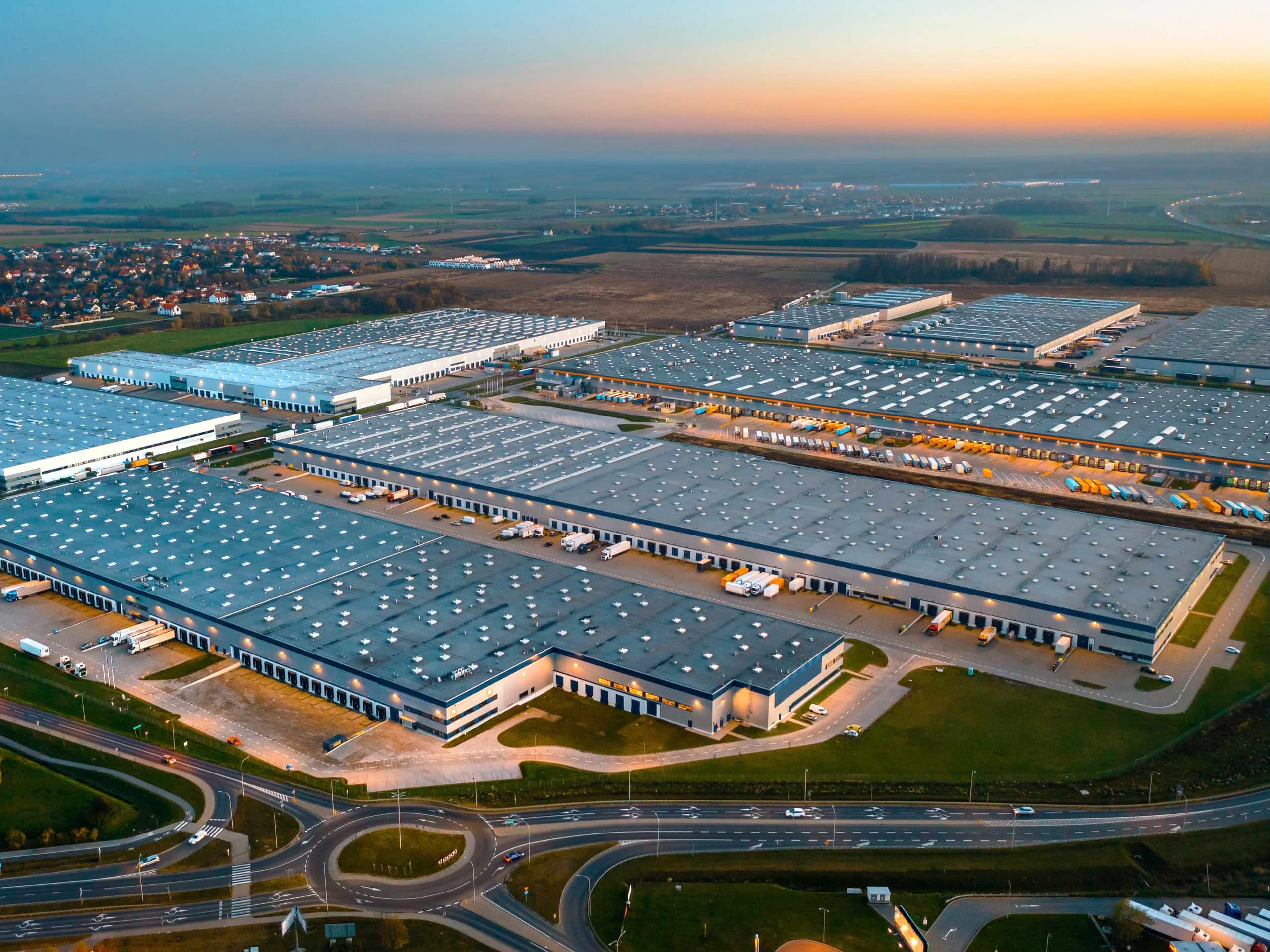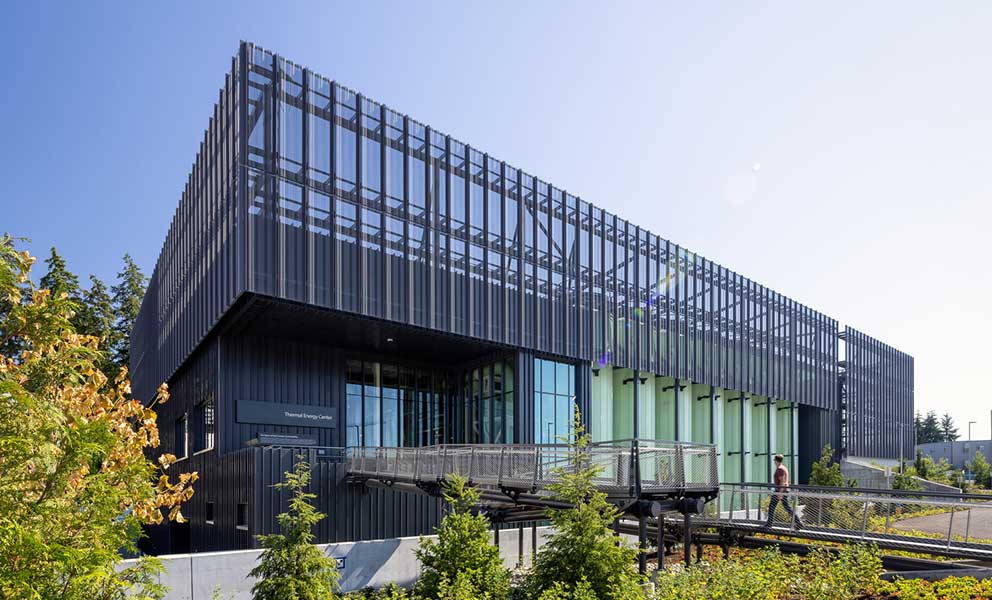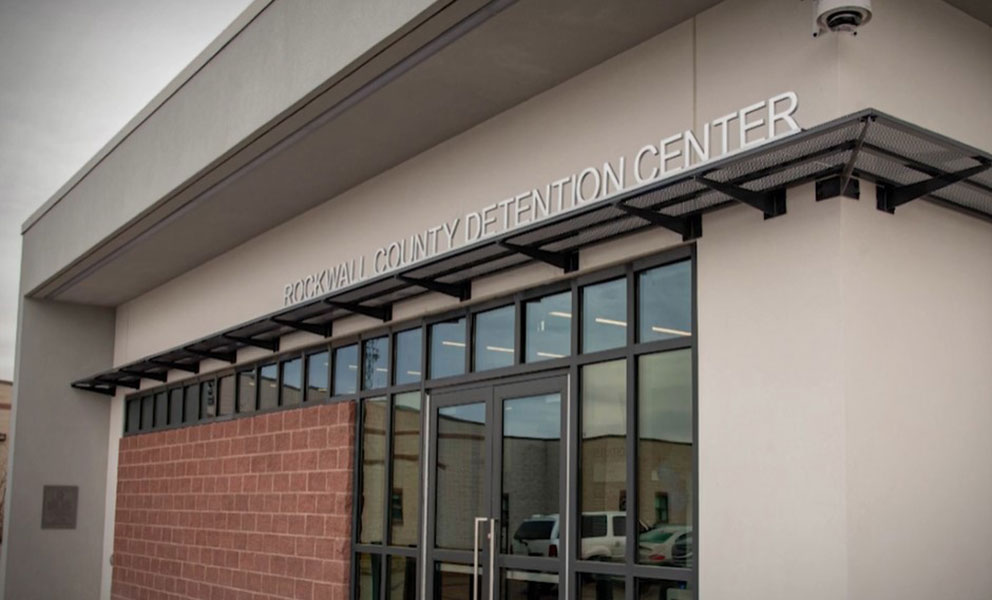Strategy 1: Reduce Greenhouse Gases
From the boardroom to the factory floor, decarbonization is a hot topic. Since buildings consume about 40% of the energy produced by the U.S., reducing emissions within our infrastructure is key to meeting emissions-reduction goals. Continued innovation in energy-efficient HVAC systems allows advanced manufacturers to use less energy without compromising required environmental conditions or comfort. The easiest and most common place to begin is to increase energy efficiency; another common strategy is to incorporate electrification of heat.
Impact: Through conscientious energy management, facilities can significantly lower their carbon emissions, contributing to environmental conservation while adhering to regulatory compliance.
Strategy 2: Integrate with Renewable Energy
HVAC solutions have the capability to integrate with renewable energy sources such as solar and wind power. This integration offers manufacturing facilities a pathway to further decrease dependence on fossil fuels. Concerns about variability can be addressed with thermal energy storage—for example, pairing renewable energy production with thermal energy storage (ice tanks that work like a battery for the HVAC system).
Impact: Integration with renewable energy not only bolsters sustainability initiatives but also presents opportunities for cost savings and energy self-sufficiency.
Strategy 3: Transition to Environmentally Friendly Refrigerants
Hydrofluorocarbon (HFC) refrigerants, the most common refrigerant type used in air conditioners today, are being phased out by the EPA due to their high global warming potential (GWP). Transitioning to eco-friendly refrigerants—either by upgrading to new equipment or by consulting with a reputable manufacturer to convert existing equipment where possible—reduces carbon dioxide emissions, minimizing potential damage to the ozone layer and reducing the potential for global warming.
Impact: By adopting sustainable refrigerants now, high tech manufacturers can reduce environmental impact from refrigerant leaks and stay compliant with the EPA’s 2024 30% reduction rule.
Strategy 4: Upgrade to Precision Cooling and Heating
Advanced manufacturing processes have precise specifications for temperature, humidity and air quality. Meeting these requirements involves using significant amounts of energy. Conventional HVAC systems are often responsible for energy waste through excessive cooling or heating. Newer, more sophisticated systems are engineered to control temperatures with exact precision, providing the right amount of heating or cooling precisely when and where it's needed.
Impact: By reducing waste, these optimized systems result in considerable energy cost savings, aligning with both financial and environmental objectives as well as local and state regulations.
Strategy 5: Employ Variable Frequency Drives (VFDs)
VFDs enable fans and motors within HVAC systems to operate only at the required speeds. The proper use of this technology ensures that energy isn't wasted on running components at full capacity when it's not necessary.
Impact: The implementation of VFDs leads to more efficient energy use, contributing to both immediate and long-term savings.
Strategy 6: Focus on Heat Recovery
Waste heat can be a valuable resource. Heat recovery treats a building’s heating and cooling equipment as one system, allowing a building to use the heat it already generates rather than creating new heat. Heat recovery solutions are designed to capture and reuse this heat, repurposing it within the facility.
Impact: By utilizing waste heat, facilities can further optimize energy use, contributing to sustainability and cost savings.
Strategy 7: Invest in Smart Controls
Modern controls, building automation systems and services perform as the HVAC system’s brain, offering control and automation. Smart controls provide insights into the system's performance—for example, energy usage—enabling continuous monitoring and analysis.
Impact: Automated controls can reduce energy usage by scheduling or sequencing systems based on plant operation schedules or occupancy. Real-time system data can be used to make improvements and anticipate potential issues before they become problems.
In high tech manufacturing facilities—like semiconductors, chip manufacturers, and electric vehicle battery production facilities—HVAC technologies and solutions are more than just tools; when designed with purpose in mind, they represent a broader commitment to corporate responsibility and environmental stewardship. By aligning HVAC management with sustainability objectives, advanced manufacturing can play a key role in molding a responsible and resilient future.
Trane, a distinguished provider of comprehensive HVAC systems, has consistently led the industry, persistently innovating and tailoring technologies to meet the sustainability goals and operational needs of contemporary manufacturing facilities. Our commitment to sustainability is manifested in our range of eco-friendly technologies that not only decrease energy consumption but also lessen environmental impact. Our state-of-the-art HVAC equipment, industry-leading controls and nation-wide service network for high tech manufacturing offer more than just cost savings; they align with broader corporate and societal objectives, positioning our customers as leaders in sustainability.
Where are you on your sustainability journey? If you’re building a new advanced manufacturing facility or looking for strategies to improve existing systems, consult with the experts at Trane to develop right-size solutions that meet both corporate sustainability targets and ambitious production goals.
Advanced Technology. Climate Sustainability.
The Road to Sustainability in High Tech Manufacturing.




































































































